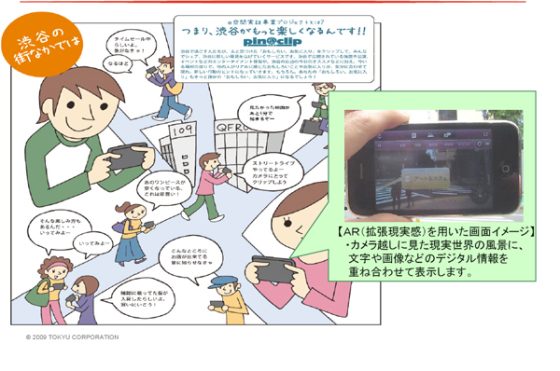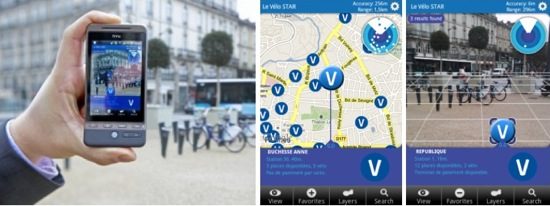Augmented reality closer to general public via smartphones
 We wrote about various augmented reality devices in our previous articles. Augmented reality glasses, see-through LED displays, Retinal Imaging Devices (from NEC and Brother) and SixthSence, all share the same principle and that is showing additional information about the world around us. However, most of the mentioned technologies are either too expensive or still in a phase of R&D, making them unavailable to ordinary consumers. If you want to see a glimpse of potential future you can try using your smartphone with software developed to provide the additional information about the world around you. In this article we’re going to write about two companies which develop such software.
We wrote about various augmented reality devices in our previous articles. Augmented reality glasses, see-through LED displays, Retinal Imaging Devices (from NEC and Brother) and SixthSence, all share the same principle and that is showing additional information about the world around us. However, most of the mentioned technologies are either too expensive or still in a phase of R&D, making them unavailable to ordinary consumers. If you want to see a glimpse of potential future you can try using your smartphone with software developed to provide the additional information about the world around you. In this article we’re going to write about two companies which develop such software.
The first company started their pin@clip application (available and applicable only in Shibuya area, Japan). The application is available for free and it’s being developed for iPhone. The testing period lasts from December 1, 2009 to March 10, 2010. During the test period pin@clip will be able to provide you with various real-time information regarding store sales, newly opened stores, movies, concerts or exhibitions. The only thing you need to do to enjoy this service is to be the area resident and apply by sending an empty message to the designated address (more information can be found on their website here, page available in Japanese language).
The second company, Layar makes free software that any developer can use in order to associate digital information with a specific location, from the Great Wall in China to the local food chains or convenient stores, will show the information onscreen at no cost. Layar makes its money by charging developers to advertise their apps on the phone’s screen.
Layar aggregates all the extra information you often wish you knew when you visited a certain new place, such as the best way to the train station from the point you’re standing on or where the best cafe is, and overlays it on the real world as viewed through your phone’s camera. And there is a whole lot more functionality that’s waiting to be realized. Layar’s code lets developers create their own informational overlays for the real world.
Unlike other dedicated AR apps, Layar is crafted to act as a browser that allows for these different apps to be used, rather than being single purpose. Layar’s already out for Android and iPhone smartphones, and its developers claim they are making a version for Symbian phones.
The blend between useful/fun/vital/helpful location-based data offered by Layar, the GPS and digital compass built into the smartphones, and the growing number of developers building new code for the platform, gives it a good shot at becoming the most popular AR browser on the market. This month, Layar will unveil a new feature that allows developers to create three-dimensional virtual objects Layar users will see through their phone’s screen. “There’s a completely new industry being created,” said one of the Layar co-founders Claire Boonstra. “We want to bring our own vision to that.”











Leave your response!